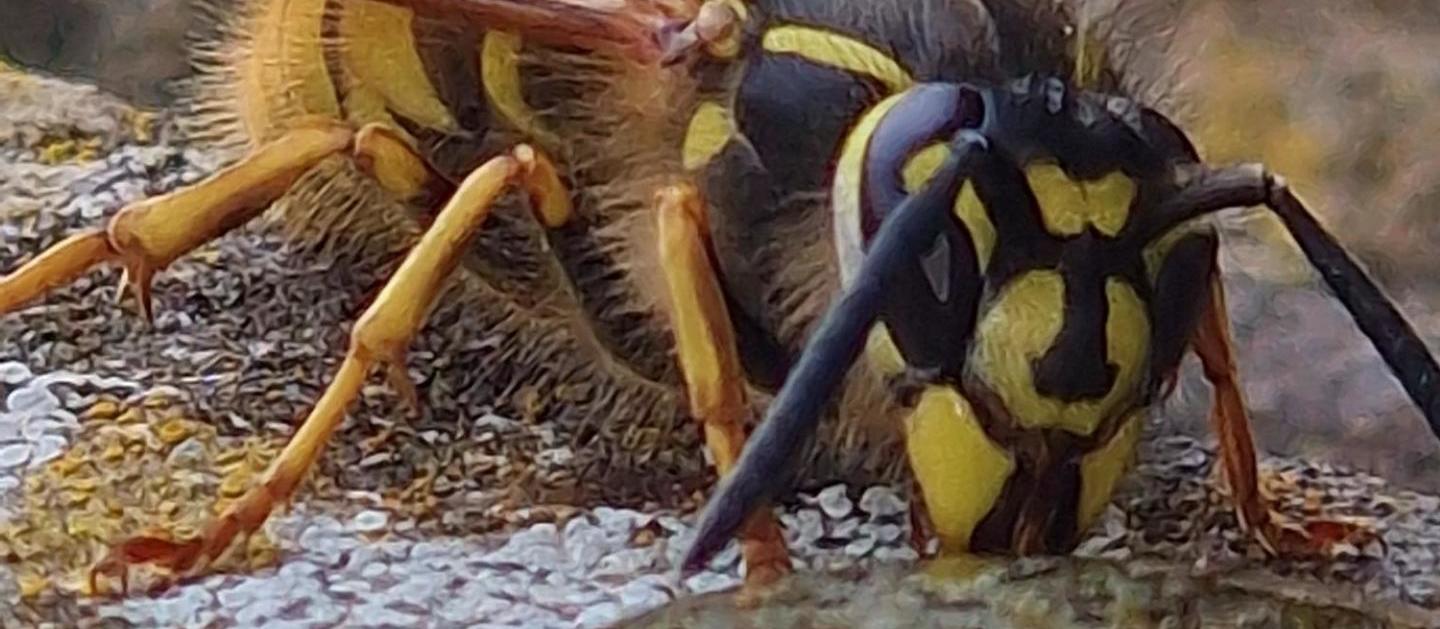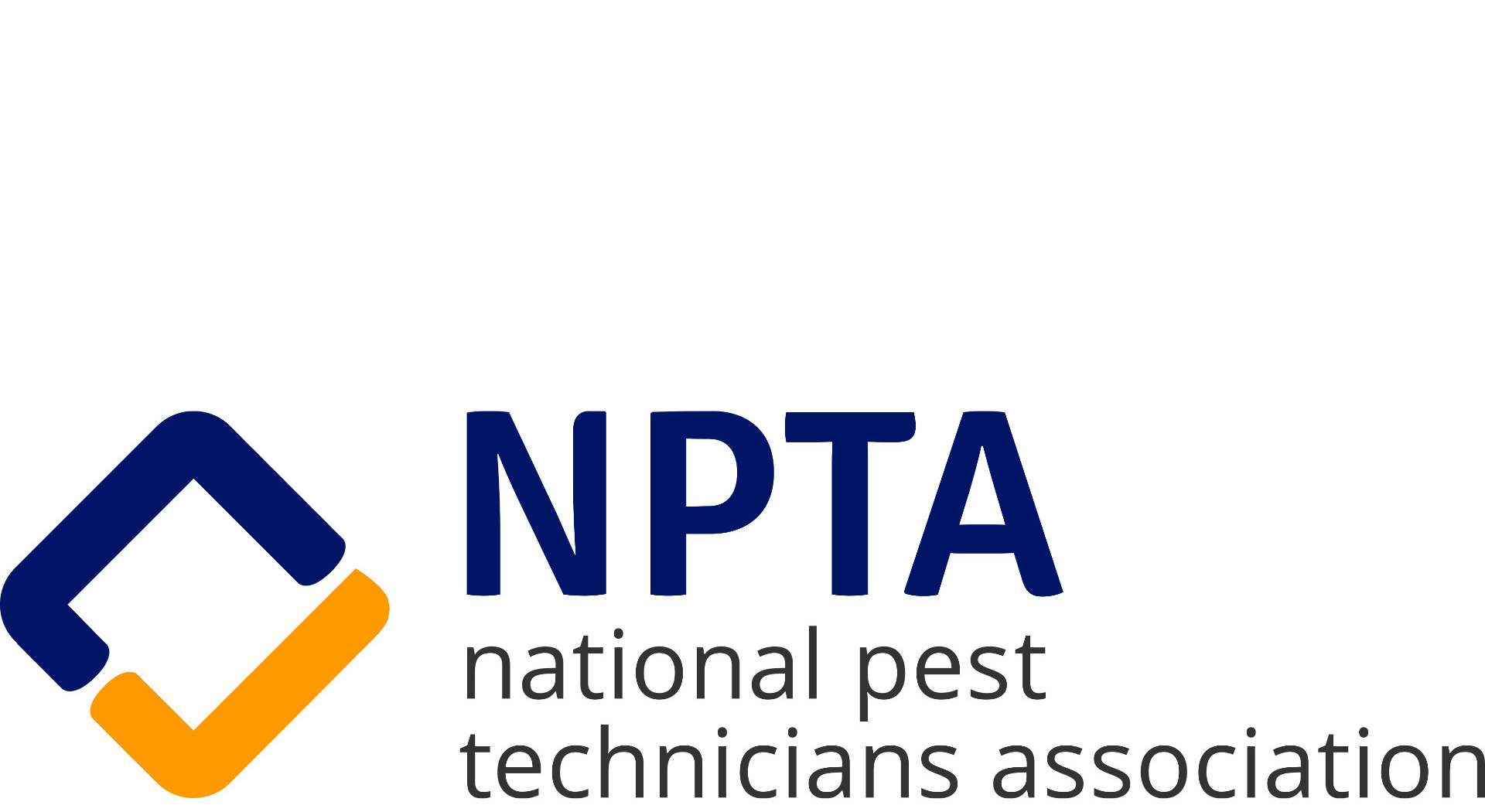Total wasp control in Maidenhead
Posted on 17th April 2024 at 17:33
The four signs of a wasp nest
As I sit here and write this blog it seems as that we are bathed in the first real sunshine of the year and its finally starting to warm up and its not only us that are beginning to feel that spring is here. I’ve already started getting calls for wasps that are now coming out of hibernation and making themselves know to householders in Maidenhead.
When the temperatures climb high enough, the Queen wasps who have been sheltering from the cold weather in sheds, places like woodpiles and up inside lofts start emerging to begin this year’s “wasp season”. Soon if the weather stays mild, like many others across the region you may find yourself having to deal with a nest of angry wasps at some point. It always seems funny to me that wasps only have two emotions; the first is anger and the second emotion, really super, mega angry.
Last weekend when I was out in the garden during one of the brief sunny spells a Queen wasp emerged, I suspect from a nearby wood pile, and as it was still decidedly chilly she was very sleepy although it was warming up. At this time of year, these Queen wasps which have been in a state of hibernation for months really need the insect version of a strong black coffee; and that’s nectar.

They’ve been in a dormant state using up their stored energy reserves and they need that sudden sugar rush which they can only get from nectar rich flowers. As it was still cool, she probably wouldn’t summon up enough energy on her own to take flight to seek out that flower, so I did something which I hope I don’t have reason to regret later on this summer and I fed her a sugar water mix. Within minutes she had started to engage her internal flight muscles which generate heat and then off she went.
That got me started, thinking about where she would end up, if it was in my garden and if I’d end up getting a call for wasps from one of my neighbours and one thing led to another which being after twelve o’clock, a Sunday and sunny was a beer, and then another beer and then, finally, to this blog: How do you know if you have a wasp nest?
In general there are around four signs that indicate that you may have a wasp nest, and these are:
Wasps on a flightpath
We’ve all heard the saying which goes to “be as a busy as a bee”? Well, there’s no denying that bees are always busy, and we all know how hard bees work but wasps, well they make bees look quite leisurely in comparison. One of my all-time favourite films is Forrest Gump, and one part I particularly like is when Forrest becomes a champion football player because of the cry “Run, Forrest run”! Well, wasps are the Gumps of the insect world.
Where honey bees are social insects they live in a more communal way, newly arriving bees will stop at the hive entrance and perform the waggledance to tell the other bees where they’ve been and where there’s good nectar, worker bees will congregate round the dancers and almost congratulate them on their find. Wasps don’t do anything similar, they fly straight into the nest, drop of the food they’ve caught, feed their larvae and then fly straight back out again to get more insects. All of this in and out motion becomes noticeable and it shows up as defined flightpaths.
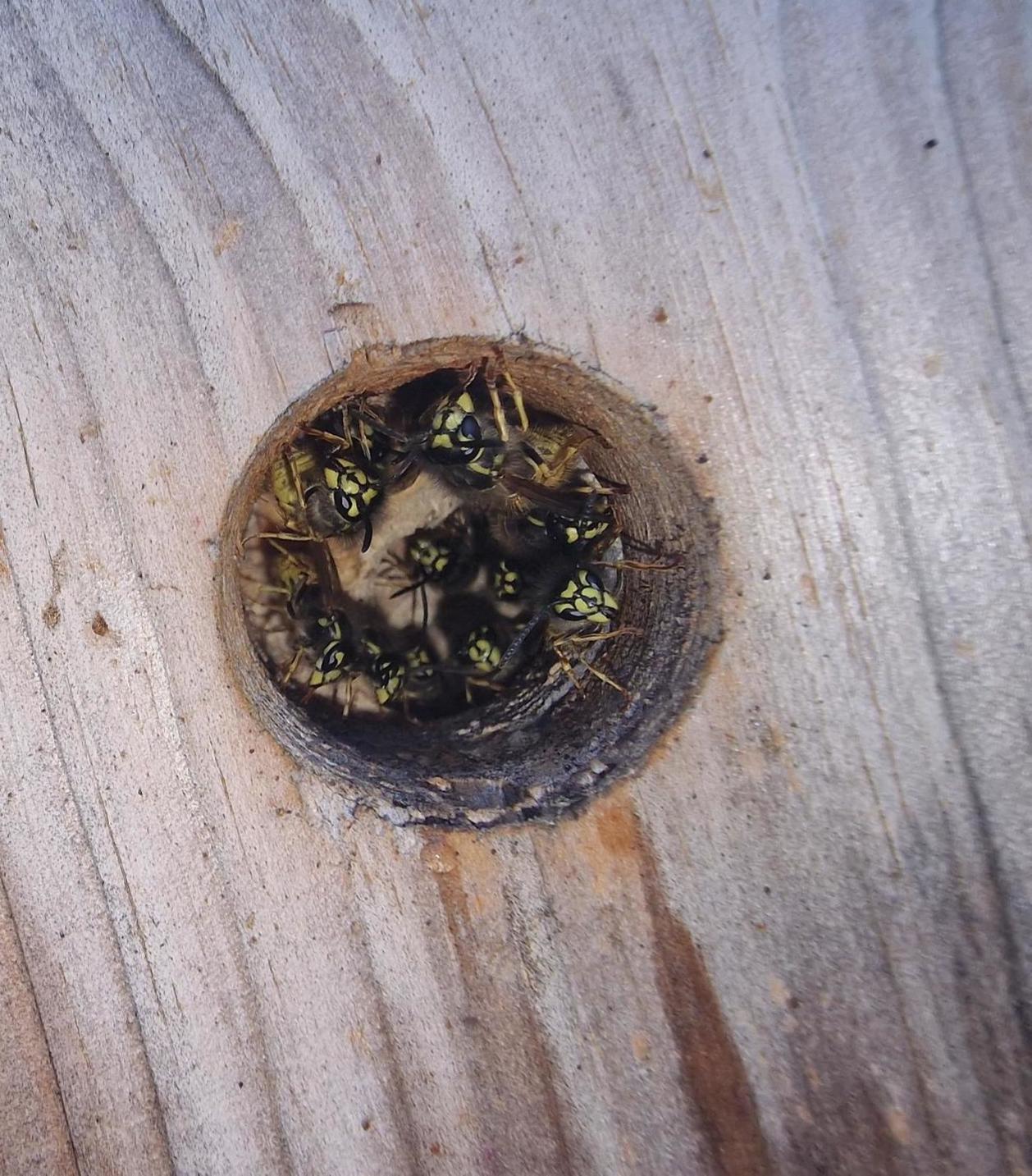
Because there are different species of wasp, they will build their nests in a variety of locations; these include holes in brickwork, burrowing underground and nesting in the branches of trees and shrubs, living as I do not far from Heathrow, the routes to and from a wasp nest remind me of the flight paths of aircraft coming in and out of Heathrow. Just like the airspace around the airport it seems that wasps coordinate their flight paths around the nest to avoid congestion and delays, they just don’t seem to have time to mess around.
Wasps are noisy insects
Wasps are incredibly industrious insects, each and every wasp nest starts off from a single strand which is called the pintel, after coming out of hibernation the Queen has the daunting task of not only building the nest but laying eggs, getting enough insects to feed herself and the newly hatched larvae and defending the budding colony from attackers.
Once she has produced enough workers to take over these tasks she will effectively become imprisoned inside the nest, her offspring will now carryon building the nests structure, taking it in just a few months from something the size of a ping pong ball to a large beach ball.
Just like in the human world, although they don’t want a cup of tea and a packet of hobnobs every ten minutes, all this building work creates a lot of noise, the nest itself is basically made of ground up wood pulp mixed with spit, as the nest grows in size and more layers of brood cells are added so the outer sheath is taken down and rebuilt. This outer sheath becomes thicker and thicker over time and this breaking down and rebuilding is the munching noise that you can hear, and not the sound of numerous packets of McVities finest confections being eaten; you can tell I’ve had the builders in recently.

Gnaw marks on wood
Because the wasps use wood pulp as their building material, they’ll harvest this from any source they can, so look around at fence panels and wooden garden furniture; if you can see fresh wood scars that run in narrow bands for an inch or two, that’s a sign that wasps are harvesting and there’s a nest nearby.
This doesn’t necessarily mean that you’ve got a wasp nest but for me its an excuse to pop the lid of a bottle of beer and tell the wife that I’m extremely busy for the next thirty minutes watching where the wasps go to make sure we don’t have a nest.
After the thirty minutes is up, just say you’ve seen a hornet, grab another beer and repeat the excuse “We don’t want a hornets nest do we?” Wasps and hornets aren’t going to fly far when they’re out harvesting wood so if you’re seeing scars on wood then it’s a clue there’s a nest nearby.
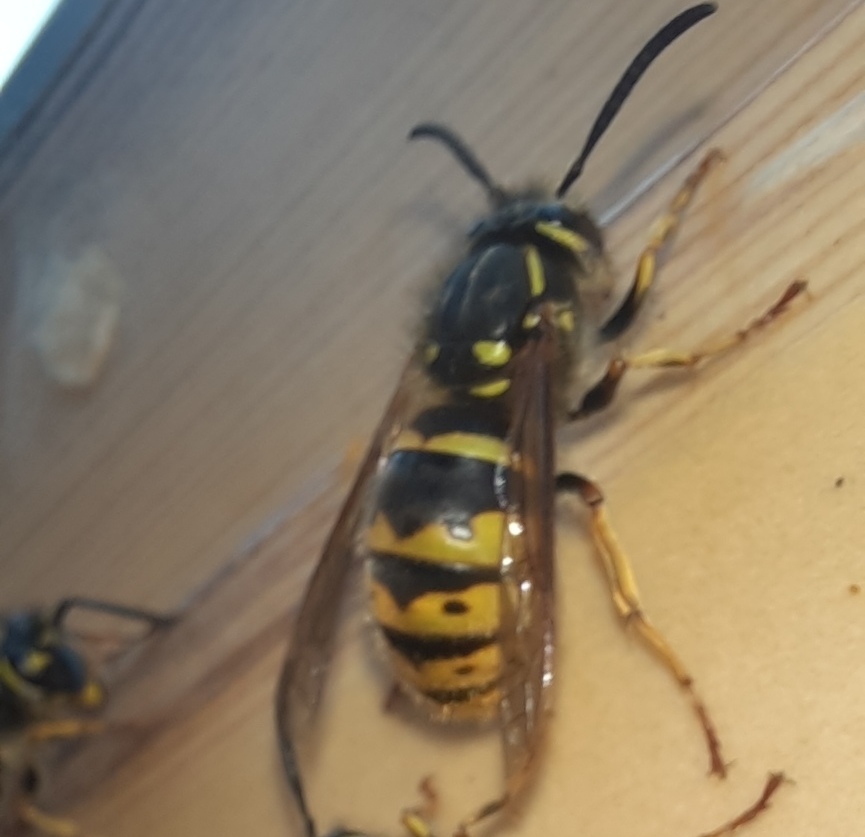
Unwanted insect visitors
Its not uncommon to visit the bathroom and find a wasp flying up and down the window trying to get out, certainly its common enough you wouldn’t think twice about it but, and it’s a big but, if you keep finding wasps inside a particular room, then you most likely have a wasp nest nearby and these are workers that find themselves getting trapped in the room.
Wasps won’t just be found in the nest or outside hunting insects or gathering woodpulp, when you see a wasp nest in a place like your loft, they’ll be workers walking about on the external surface. These wasps are busy doing a bit of building work but they’re also guarding the colony, your actions can affect their behaviour, for example, popping up into the loft to get suitcases you’ll need to switch the light on right?
This will cause those wasps to take flight and investigate the source of the illumination, which is why they’re suddenly pinging of the 100watt, extremely hot lightbulb, and getting angry, or rather more angry than usual.
This also happens at night and early morning when its dark outside and you’ve got lights on in bedrooms and bathrooms, wasps will detect light in the loft and leave the nest to investigate.

As they don’t hunt at night (unlike hornets) when the lights go out, the wasps simply stop flying and land wherever they are. Its like a dangerous game of sleeping lions, where instead of getting an excited toddler, you get an angry wasp instead.
The next day, when the sun comes up and light starts to come into the loft through the many small gaps that are up there, the confused and disoriented wasps make their way to those bright areas; some of which will be where lighting cables run through plasterboard, others maybe where flexible hose cuts through to take away steam from bathrooms and so, you’ll find wasps appearing in those rooms day after day
Total wasp control in Maidenhead
Wasps will often become a problem if just left alone, later on as the season draws to a close, and after the Queen has died, those worker wasps that are left behind, or rather those hundreds, maybe thousands of worker that are left behind will be hungry. Wasps don’t actively feed themselves as they don’t have teeth of any description, it’s the wasp grubs inside the nest that feed the workers. When the Queen wasp dies, there will be no more eggs to hatch and become larvae, so without a food supply those workers will starve, and they’ll do that in a very angry way.
Wasps at this time of year are attracted to any sugar syrup; things like fallen fruit that has become bruised and damaged, cans of sugar rich soft drink and especially the tiny flowers of ivy. They can become a nuisance and can cause real problems if you’re sat outside enjoying the weather, at this stage because the colony that was centred around the nest has collapsed it is impossible to treat them as a whole; where we could use an insecticide straight into the nest, now all you use are liquid lures which perversely, bring even more wasps into your garden.
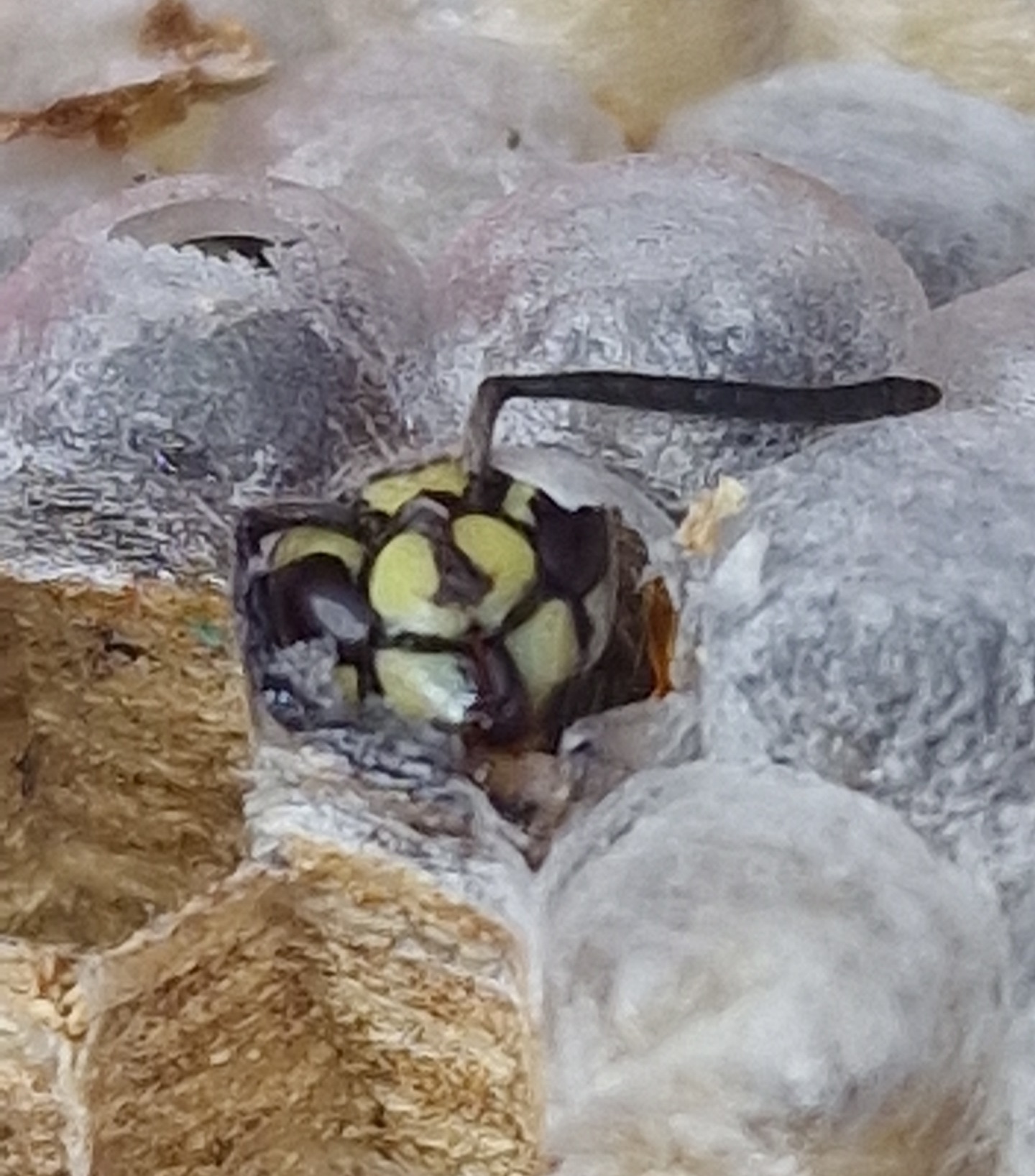
If you have a wasp nest in Maidenhead, look out for the four signs of activity; if you discover them then get us out to deal with the actual nest with the colony inside. The optimum time for wasps control is in June as one species of wasp, the Saxon wasp is an early finisher and they can start causing massive problems from the end of June onwards. Wasp control is relatively easy and not expensive, its far better to get rid of them earlier than later, after the Queen wasp has gone there’s almost nothing that we can do.
Maidenhead Pest Control total wasp control in Maidenhead.
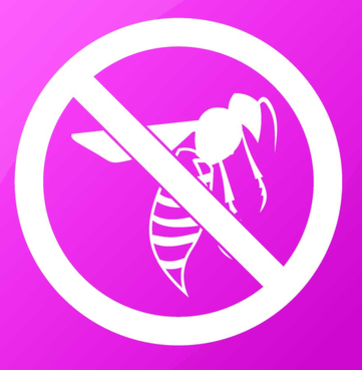
Tagged as: Wasps, Wasps and bee's
Share this post:





